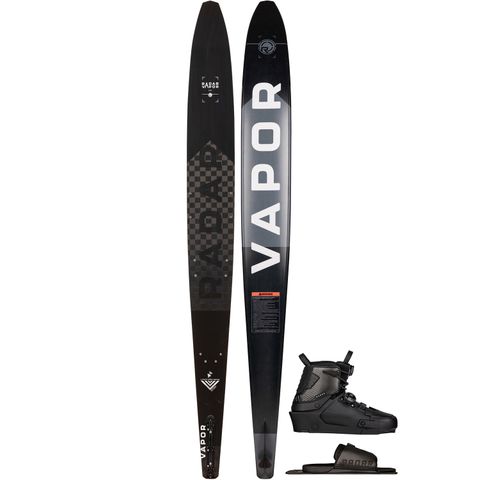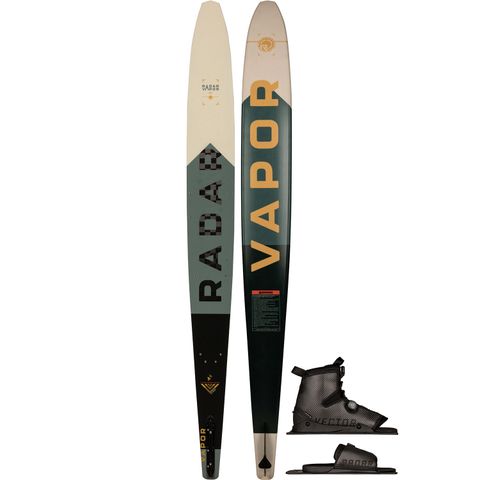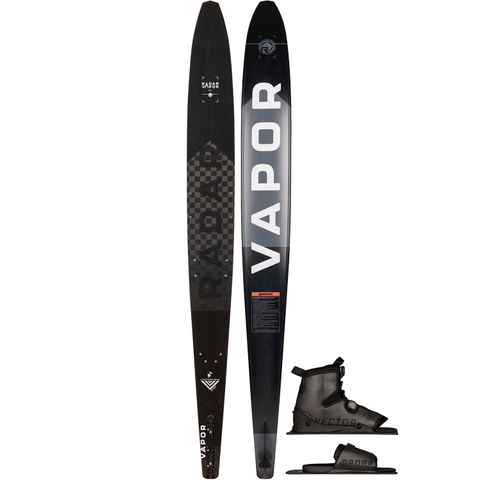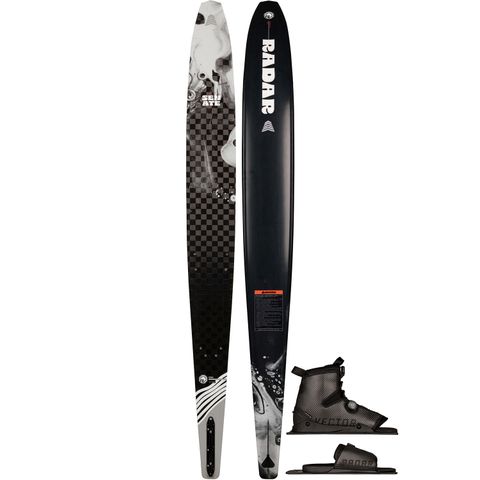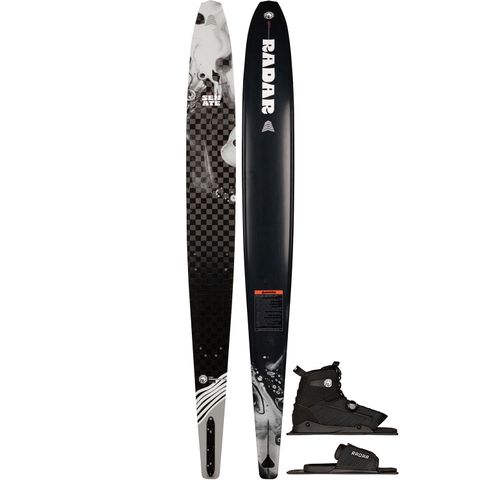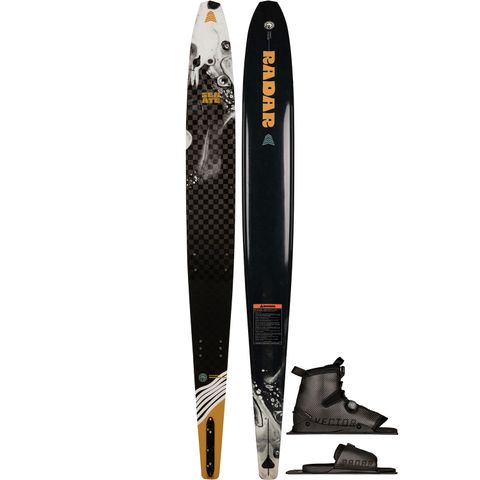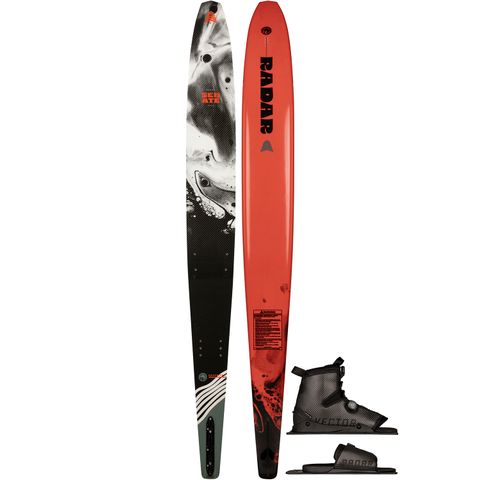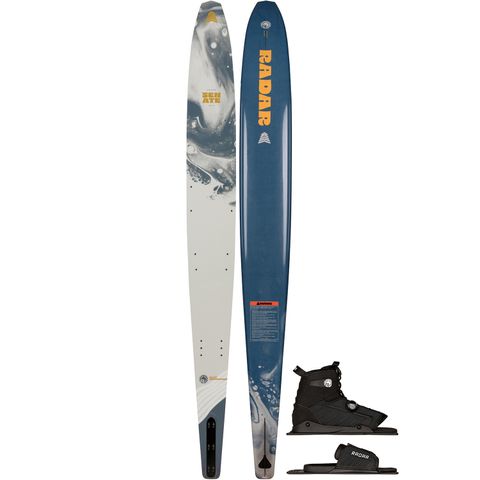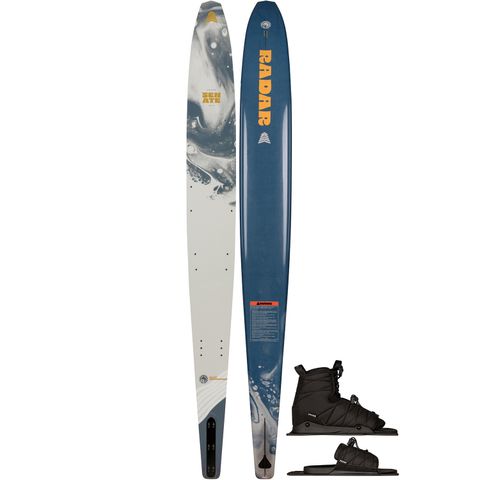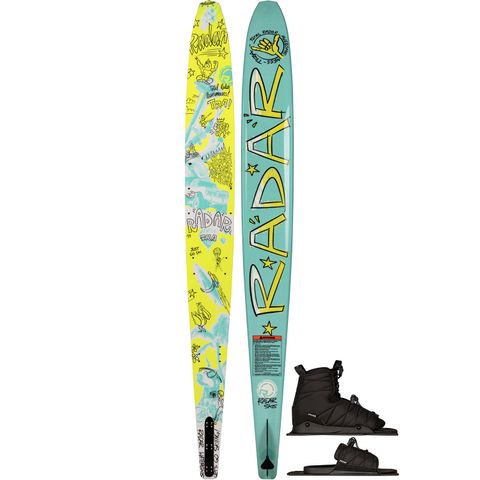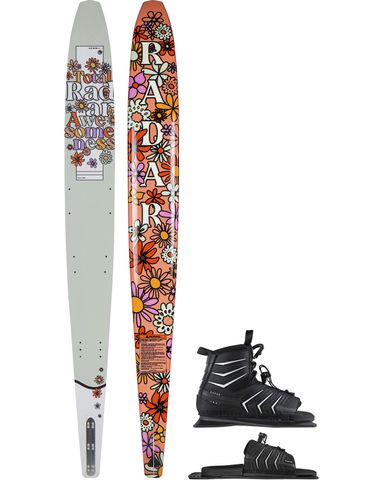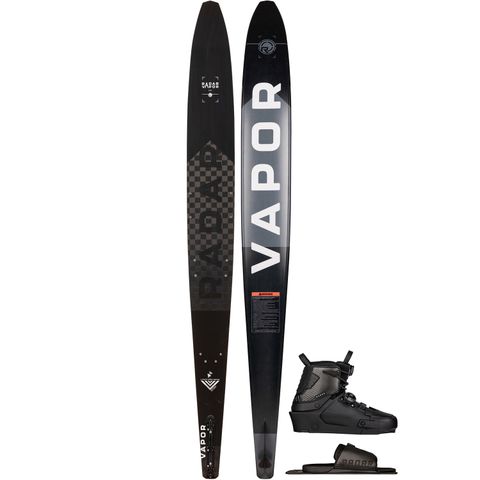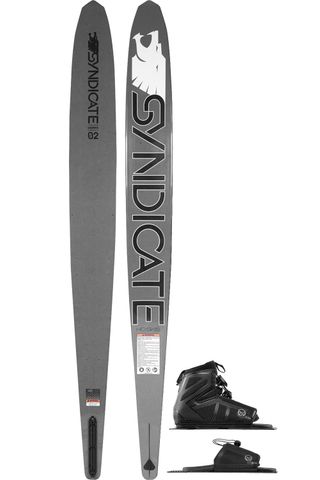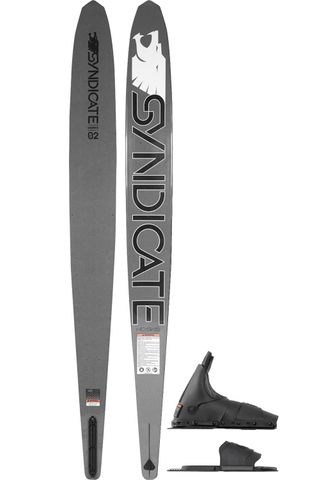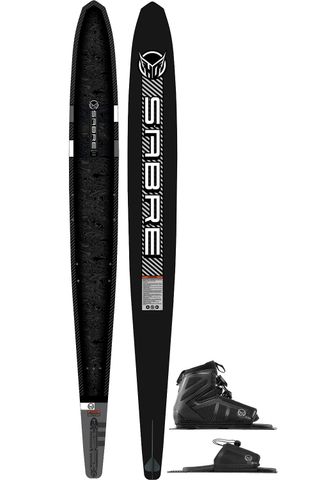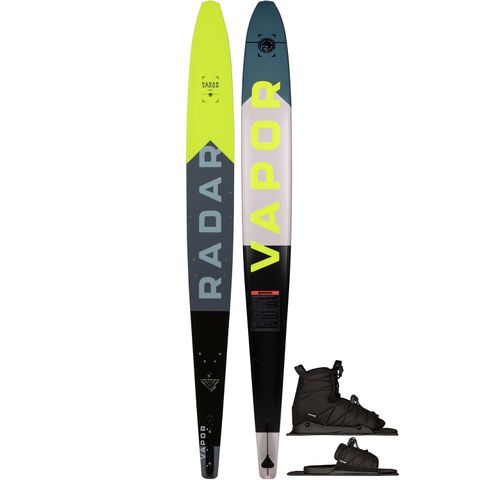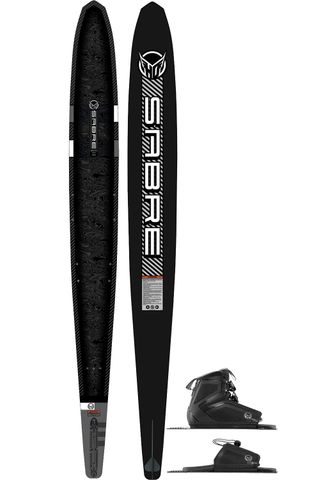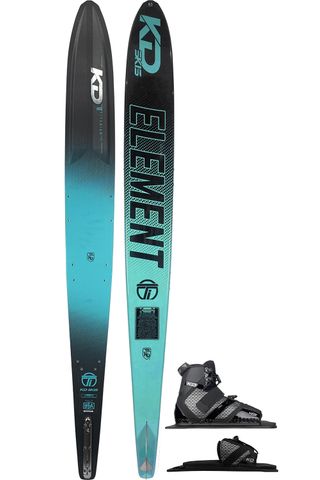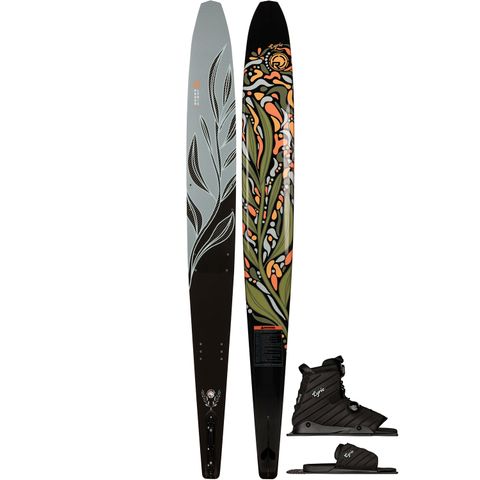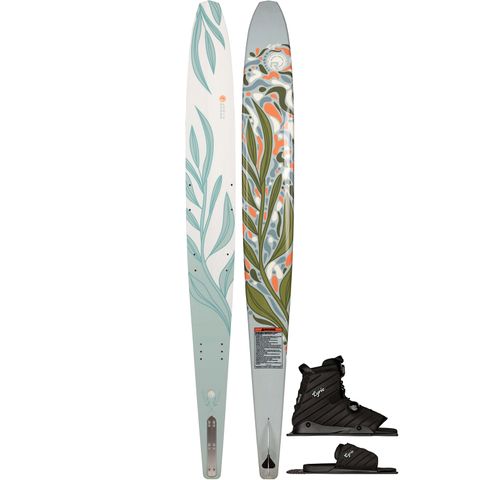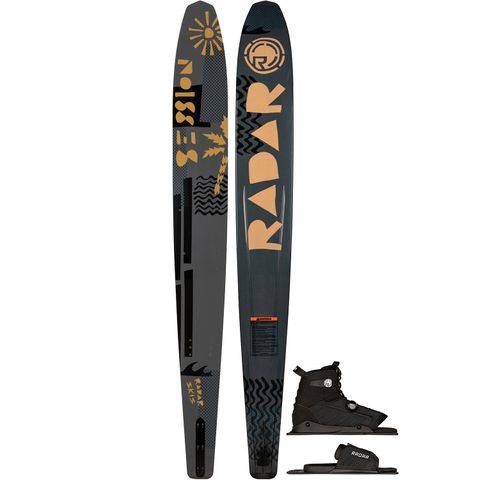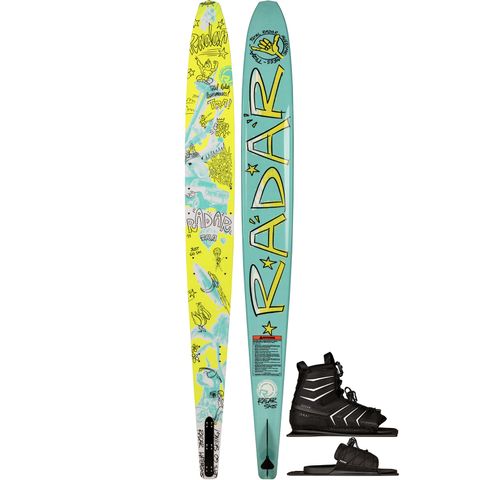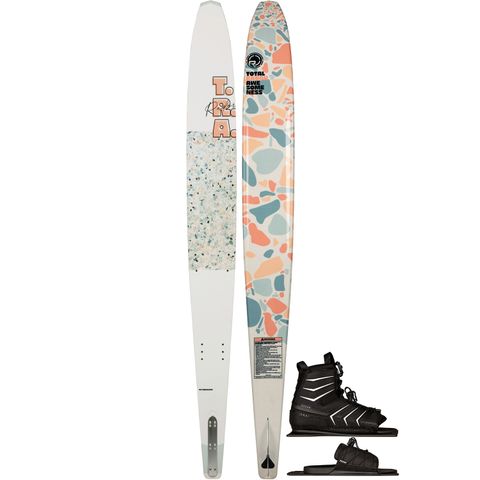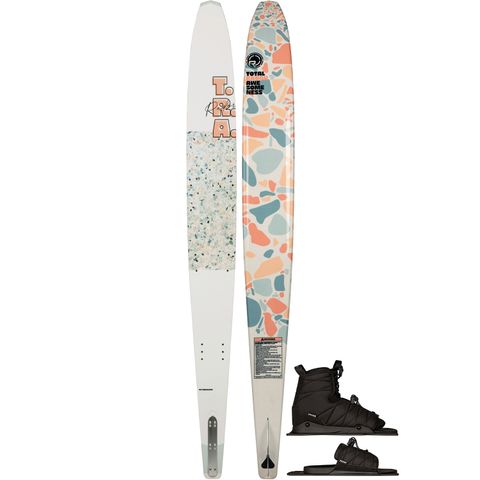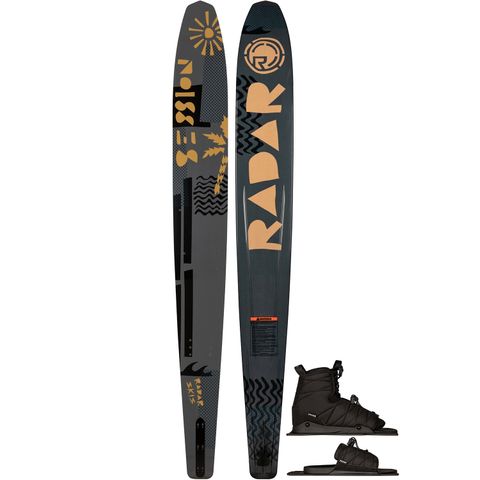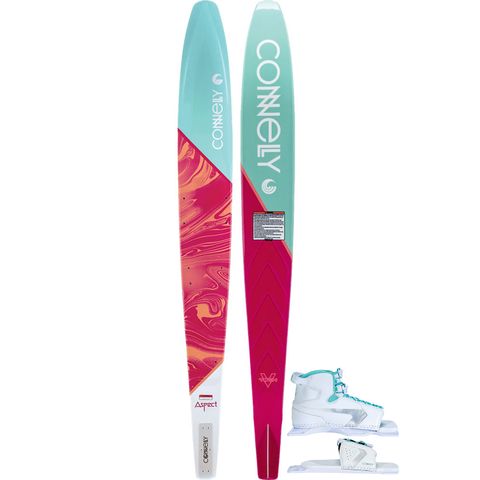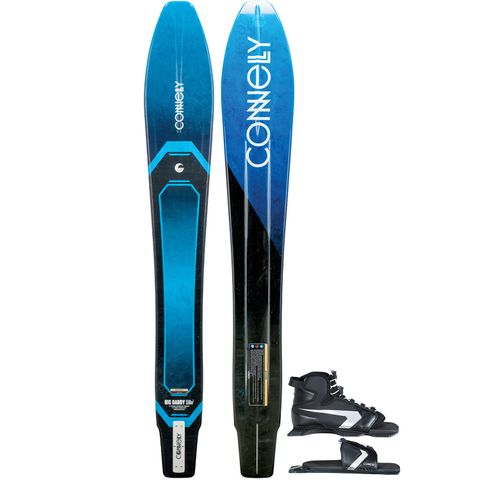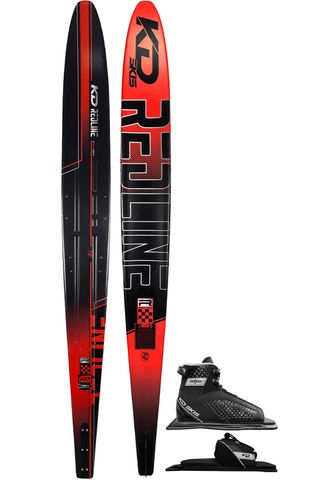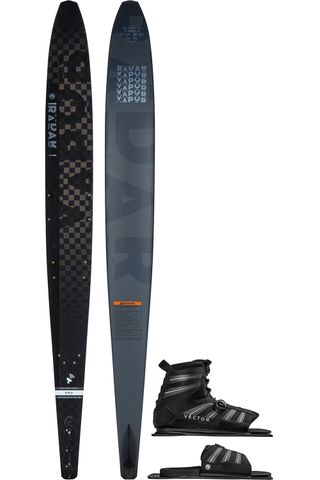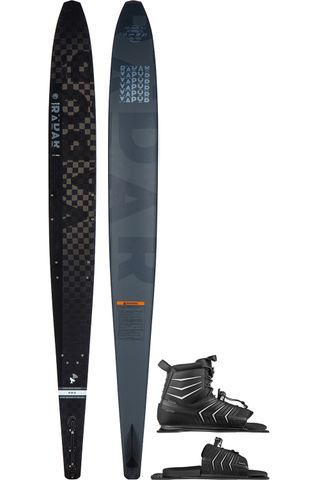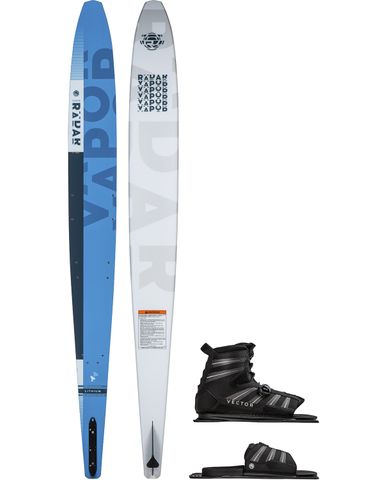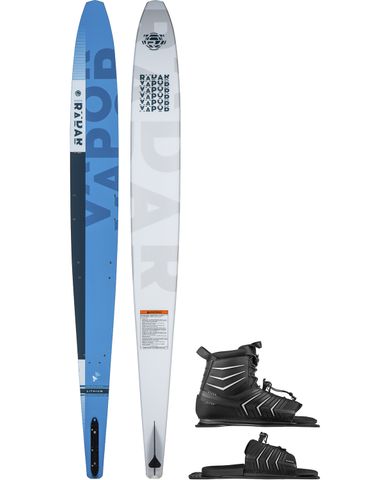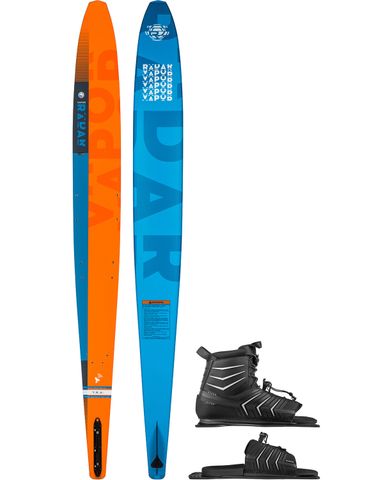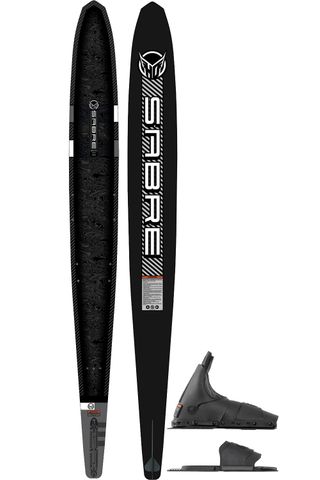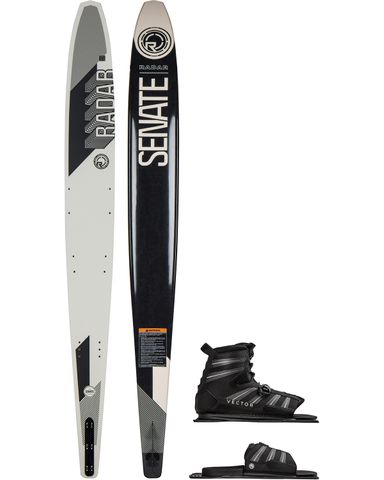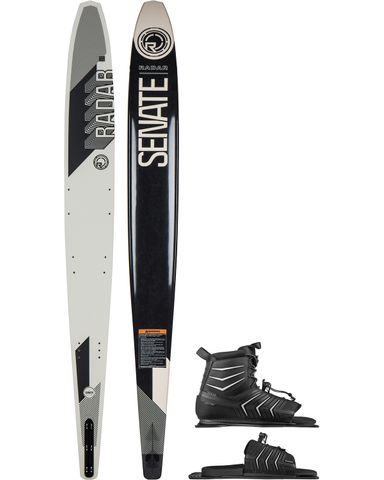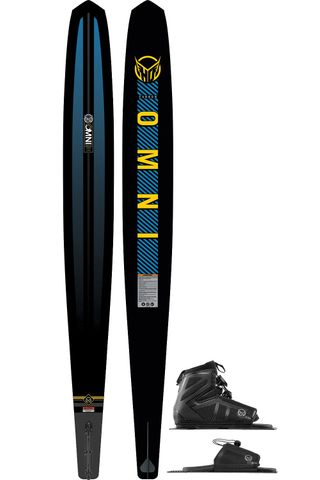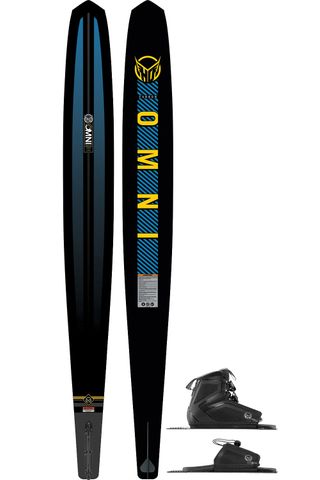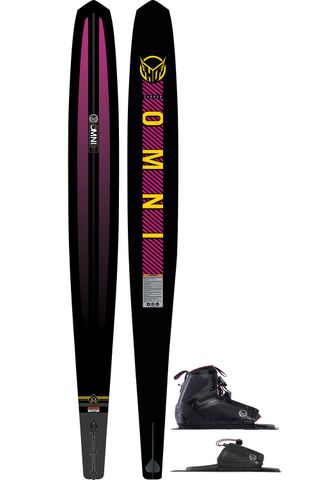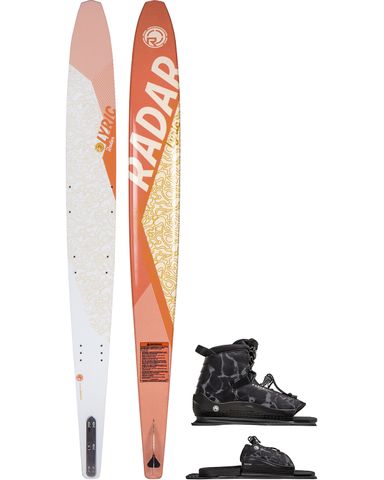Salom Ski Packages
Choosing your first slalom ski or upgrading an old ski shouldn’t be a daunting task! There are many different slalom skis designed to suit different kinds of skiing. In this article we’ll walk you through the important features, shapes, constructions and what makes slalom skis different from one another. Slalom skis are available in 3 key categories: Free-Ski, Course and Cross-Over:
CATEGORIES:
- FREE-SKI: Free-Skis are designed to effortlessly carve open-water lakes and rivers in a range of water conditions. They feature a wide width, soft flex, and shallow concave; All of which will aid easy deep water starts, enough buoyancy to cater for slower boat speeds between 20-30mph and smooth, long radius turns. A free-ski will lend itself towards beginners, big guys or a skier that wants to relax and have fun behind the boat!
- COURSE: Course skis feature a stiff, responsive construction for acceleration out of a turn, a narrow overall width allowing the ski to roll from edge to edge with added power and drive and a deep concave to roll from edge quickly and aggressively. With all of this considered, a course skis primary purpose is to get around 6 buoys’ as quickly and efficiently as possible. Course skis are built with high-end foam cores, carbon fibre laminates and adjustable fin blocks and are only suited to speeds of 34-36mph.
- CROSS-OVER: Cross-over skis combine the performance of course skis with the stability of free-skis resulting in a versatile offering suitable across a range of ability levels. Cross-over skis feature shapes based closely on course skis but add extra width into the body for more stability and slower boat speeds between 26-34mph. They are available in a range of constructions from basic to highly advanced allowing the skier to choose a construction based on their ability and skier preferences.
CONSTRUCTION:
All modern slalom skis in their simplest form are built with fibreglass moulds and PU (polyurethane) foam cores. This most basic construction suits beginner and intermediate skiers for its reliability and forgiving nature. As the ski turns around a buoy, it bends under load and the speed in which it returns to its original form is described as its ‘responsiveness’. A more responsive ski will snap back to shape quickly, accelerating out of a turn and across the wakes towards the next buoy. Carbon fibre was introduced into slalom ski contractions as a replacement for fibreglass and results in more response with a much-appreciated side-effect of being lightweight. Carbon fibre is commonly used across kids, ladies, and men’s skis by varying the number of laminates for each use case.
- Since the early 2000’s, PU (polyurethane) foam has been replaced by PVC (polyvinyl chloride) in many high-end slalom skis. PVC paired with carbon fibre laminates results in a construction that is significantly more responsive and lightweight when compared to traditional PU cores. In 2019, Radar introduced PMI (polymethacrylimide) into its ‘Pro Build’ range found in both the Vapor and Senate. PMI is the most responsive slalom ski core on the market offering an increase even larger than the gap between PVC and PU.
- Having a slalom ski built with PMI or PVC cores will offer the best performance however they aren’t always the best option for all categories of ski or all skier types! PMI and PVC cores are less forgiving and only suit confident skiers with aggressive skiing styles. In addition, they will only perform well in flat water conditions. For skiers who brave all weather, a traditional PU core will handle rough water more comfortably.
SIZE GUIDE:
Choosing the correct size of water ski depends on your weight and the style of ski however skier preferences can be considered. Most beginner and intermediate skis are available in 2” increments from 63” to 71”. Course specific slalom skis are available in 1” increments between 65” and 69” to dial in the exact size required. If a skier is between the range of two ski sizes, their age and fitness should be considered; The larger of the two sizes will aid deep water starts and the smaller of the two will aid performance.
- 63” (Up to 55 kg)
- 65” (50 - 70 kg)
- 66” (60- 80 kg)
- 67” (70 - 90 kg)
- 68” (80 - 100 kg)
- 69” (80 - 100 kg)
- 71” (100+ kg)
SLALOM SKI BOOTS
Slalom ski boots are available in two key styles; Open-toe or closed-toe. Majority of modern slalom skis use a ‘traditional’ mountain pattern allowing different brands of boot to be fitted onto any given ski. 2017 and earlier HO skis with D.C. (Direct connect) inserts must be mounted with HO D.C. style front and rear boots. Those wishing to mount Radar boots to their 2018 and later HO ski must use an aluminium rear plate. BOA slalom ski boot variants replace traditional lower laces with a BOA lacing system for fast, efficient closure.
STYLES:
- OPEN-TOE: Open-toe ski boots offer the most adjustment as they cater for a range of foot sizes (i.e., US 7 to US 11) and are not left or right foot dependant. Most open-toe boots are available in front and rear plate options. The top lace on all open-toe boots will be elastic to allow for safe release in case of an accident.
- CLOSED-TOE: Closed-toe slalom ski boots offer the best fit and performance. Most closed-toe boots are available in individual US sizes and left or right foot variants. All closed-toe boots are available with rear aluminium plates and the front and rear aluminium plates are interchangeable.
- REAR TOE PLATES: Rear toe plates are available in adjustable or fixed styles. Adjustable RTP’s are one-size-fits-all and feature a lace or BOA system to cater for all foot sizes up to US 14. Fixed RTP’s are made of rubber and are available in specific US shoe sizes with aluminium plates. Hybrid rear toe plates (HRT’s) combine the ankle support of a full boot with the flexibility of a RTP. HRTs are best for skiers who deep water starts with two feet in and are looking to bridge the gap between a full boot and traditional RTP.





